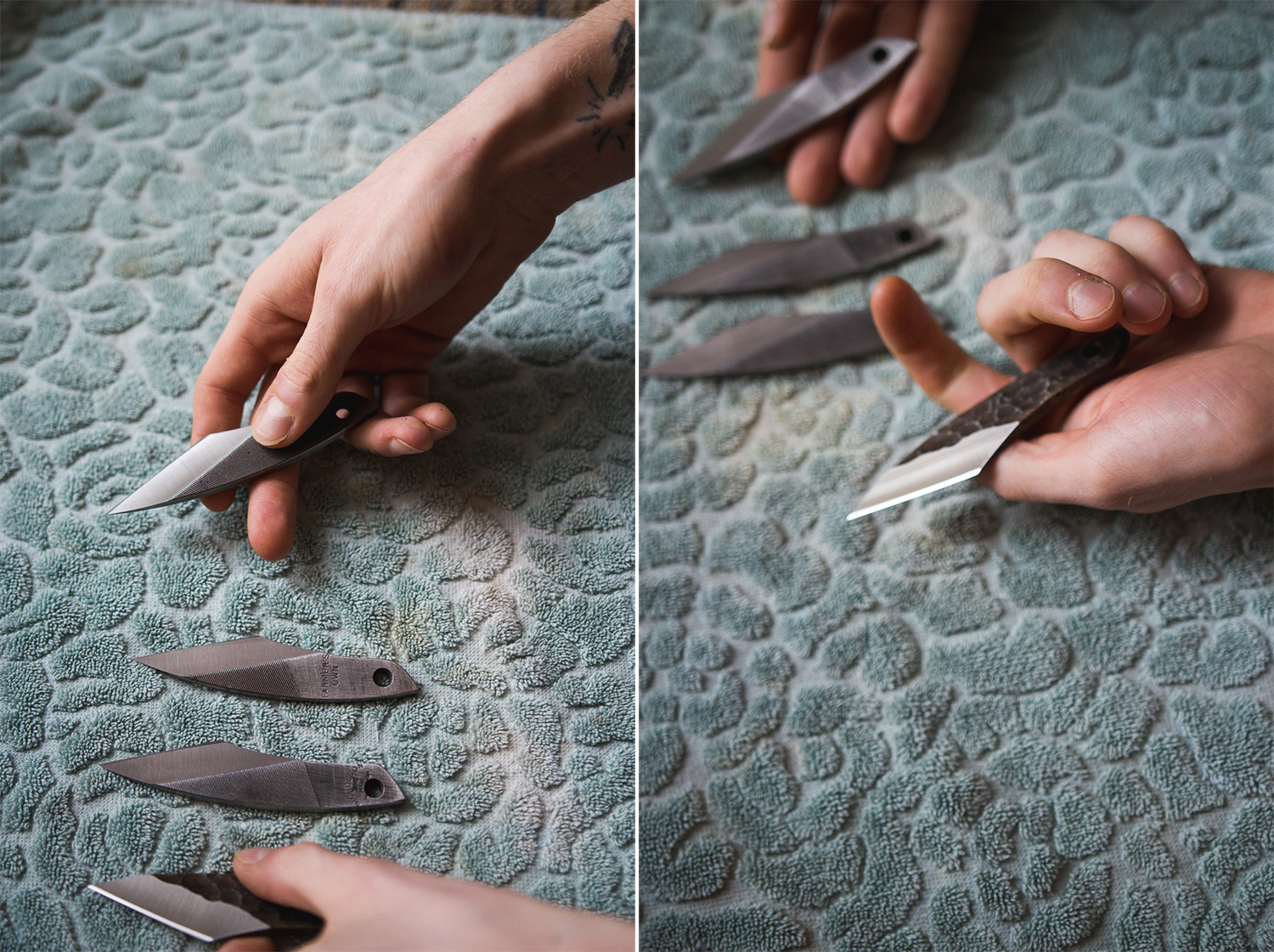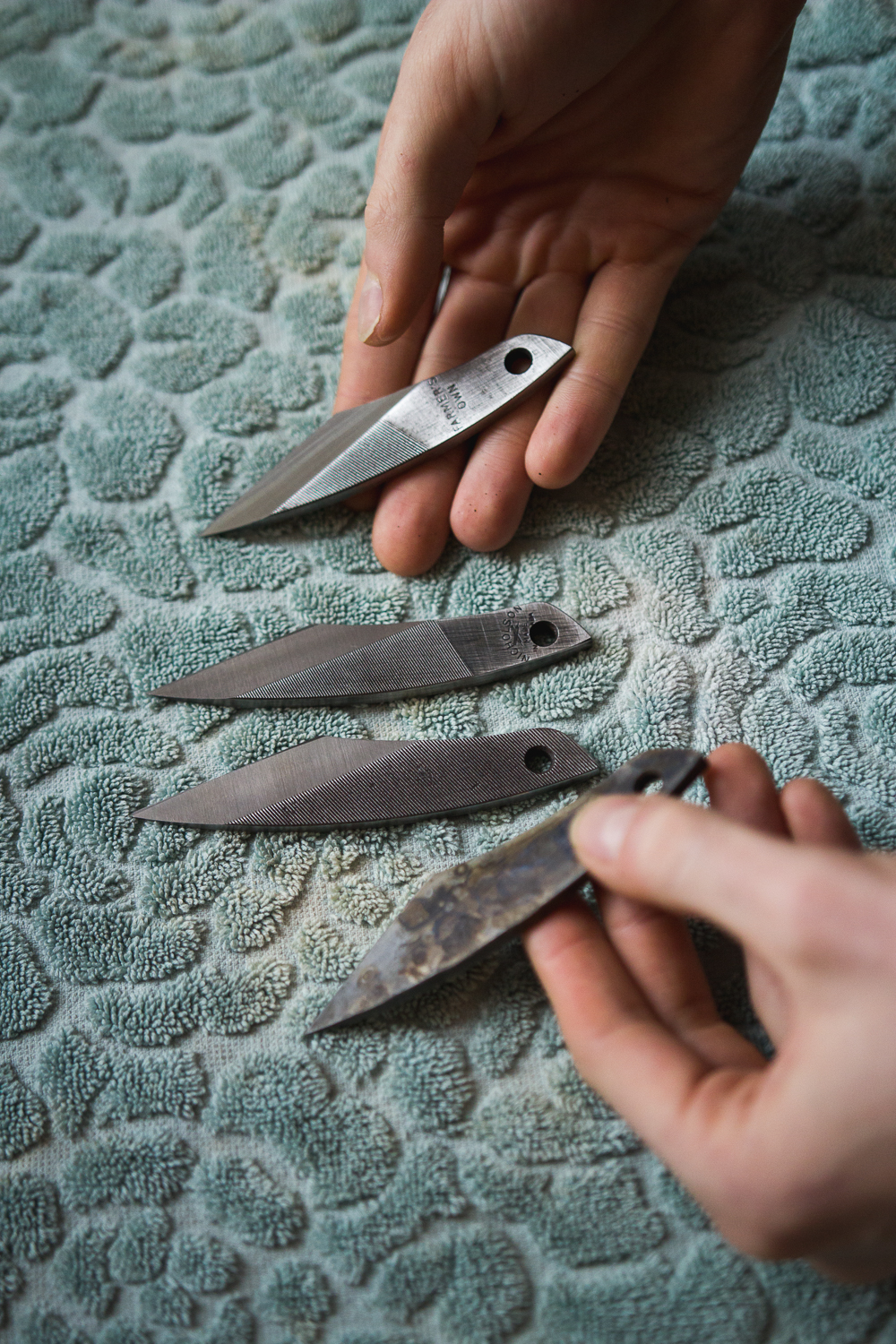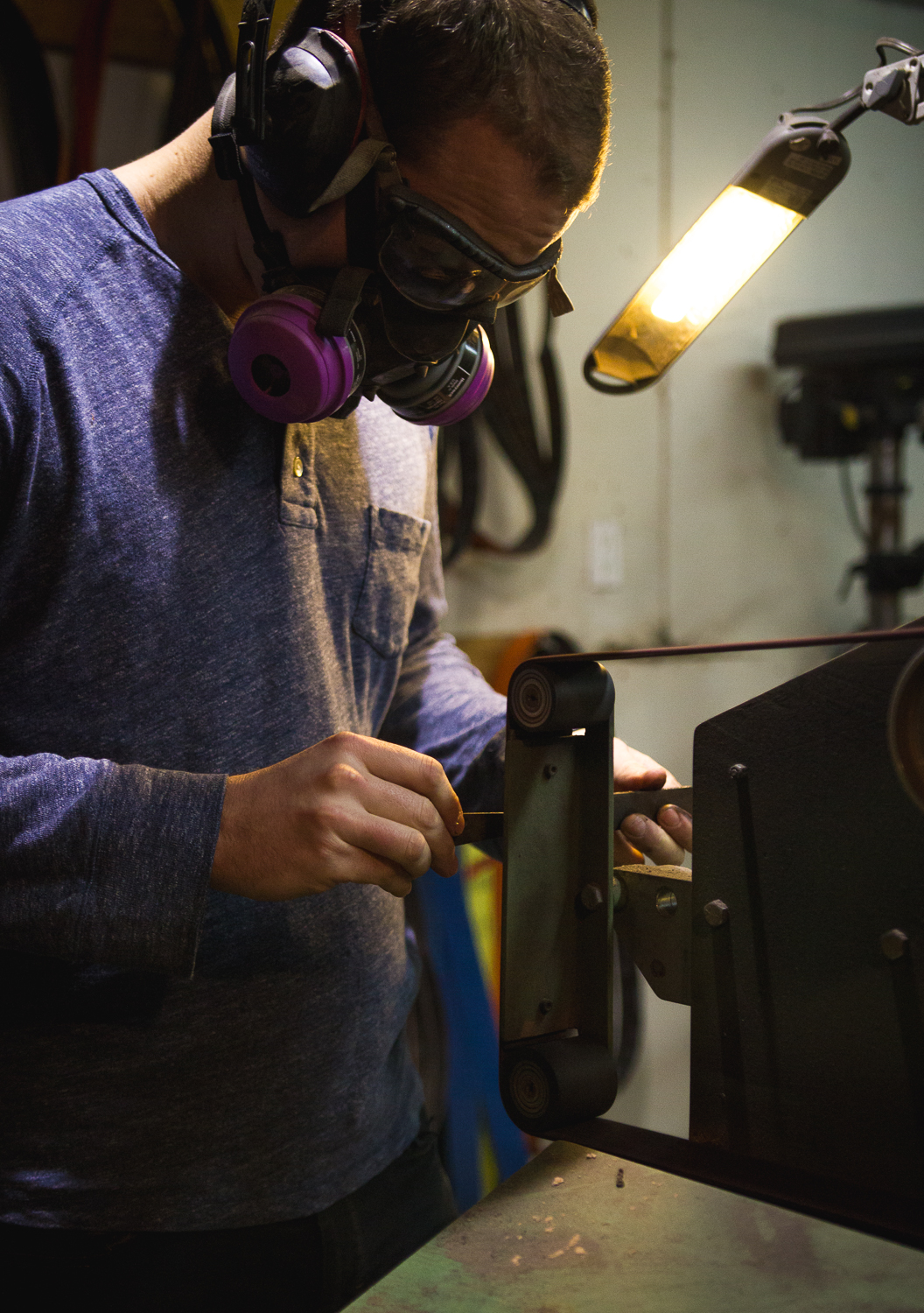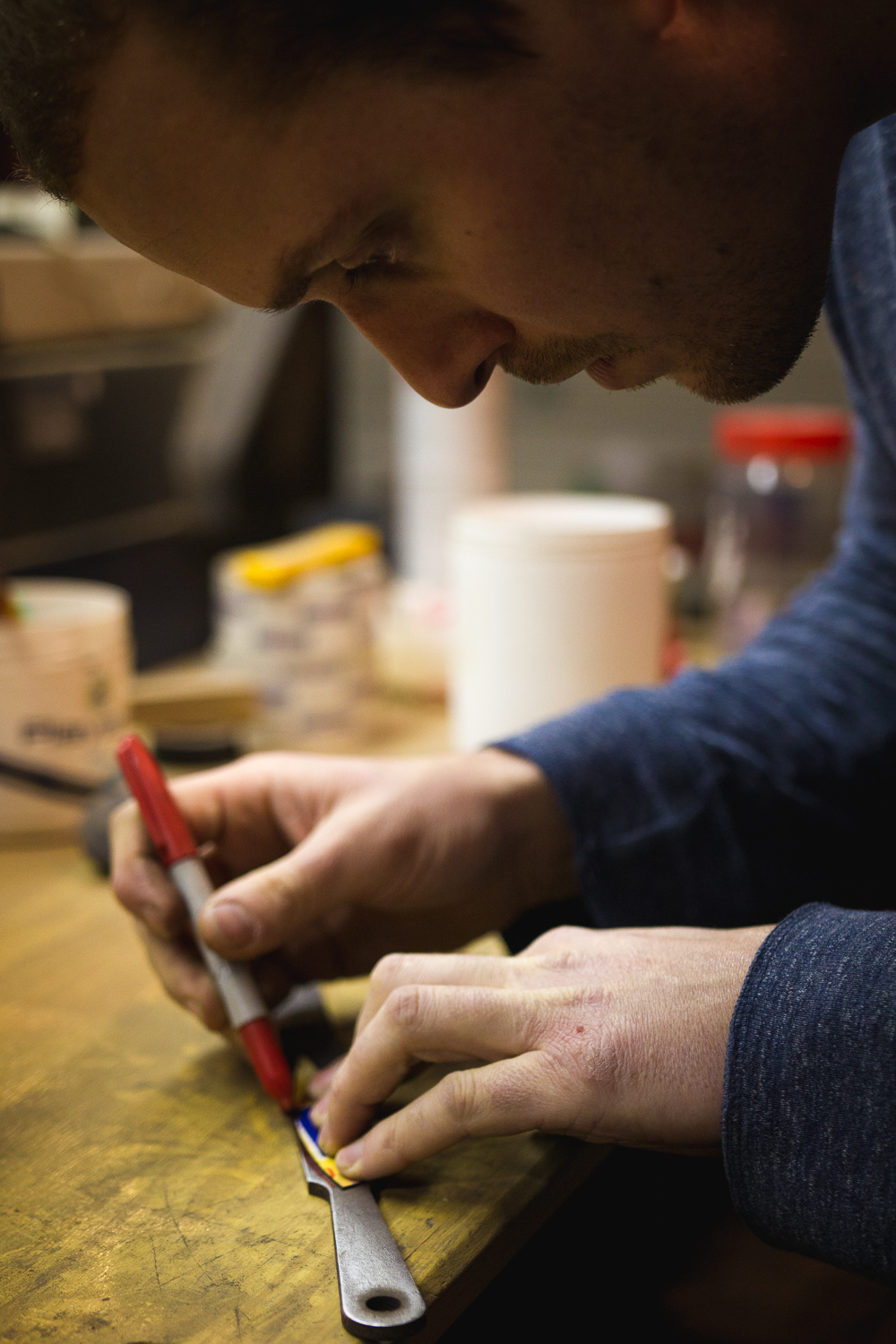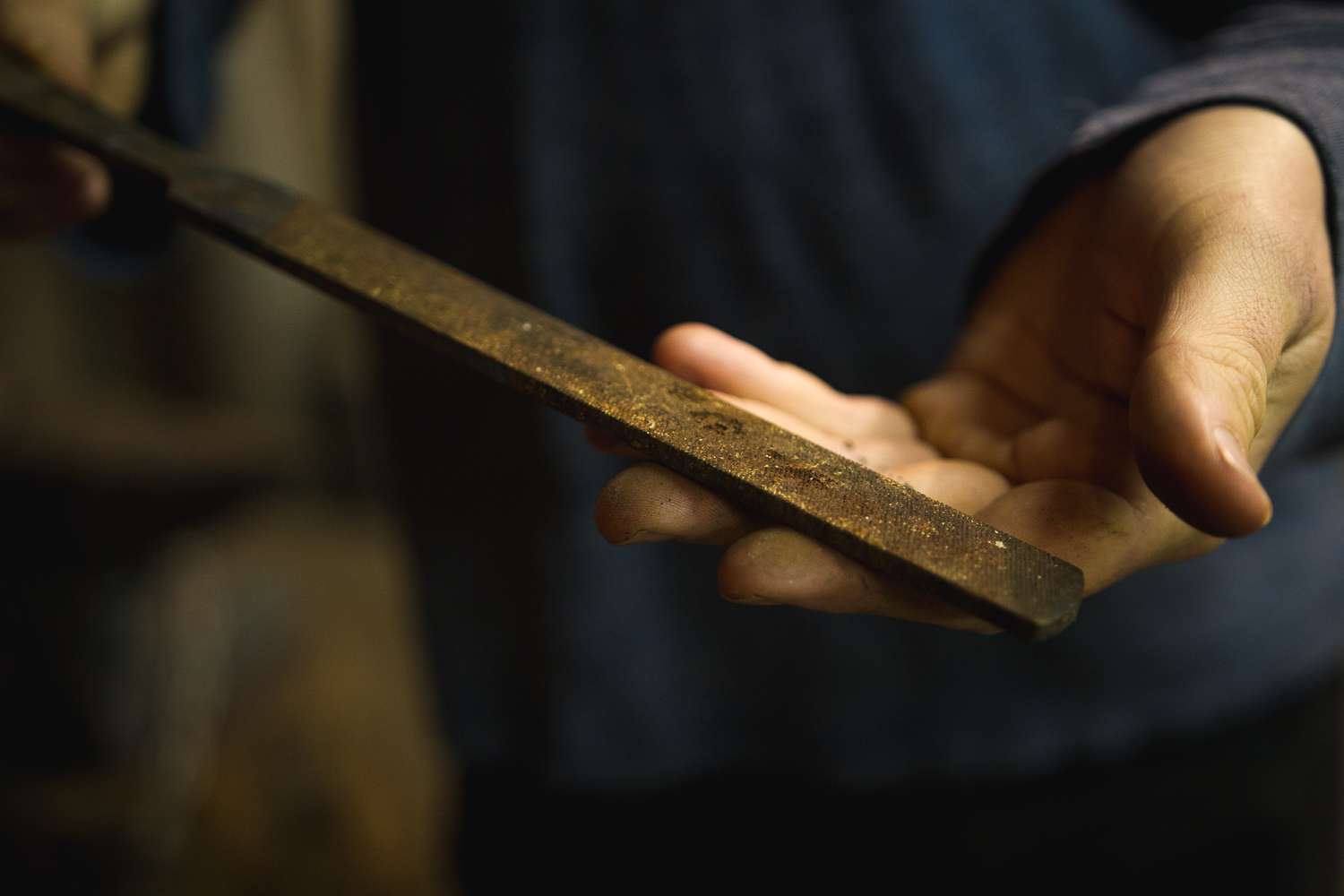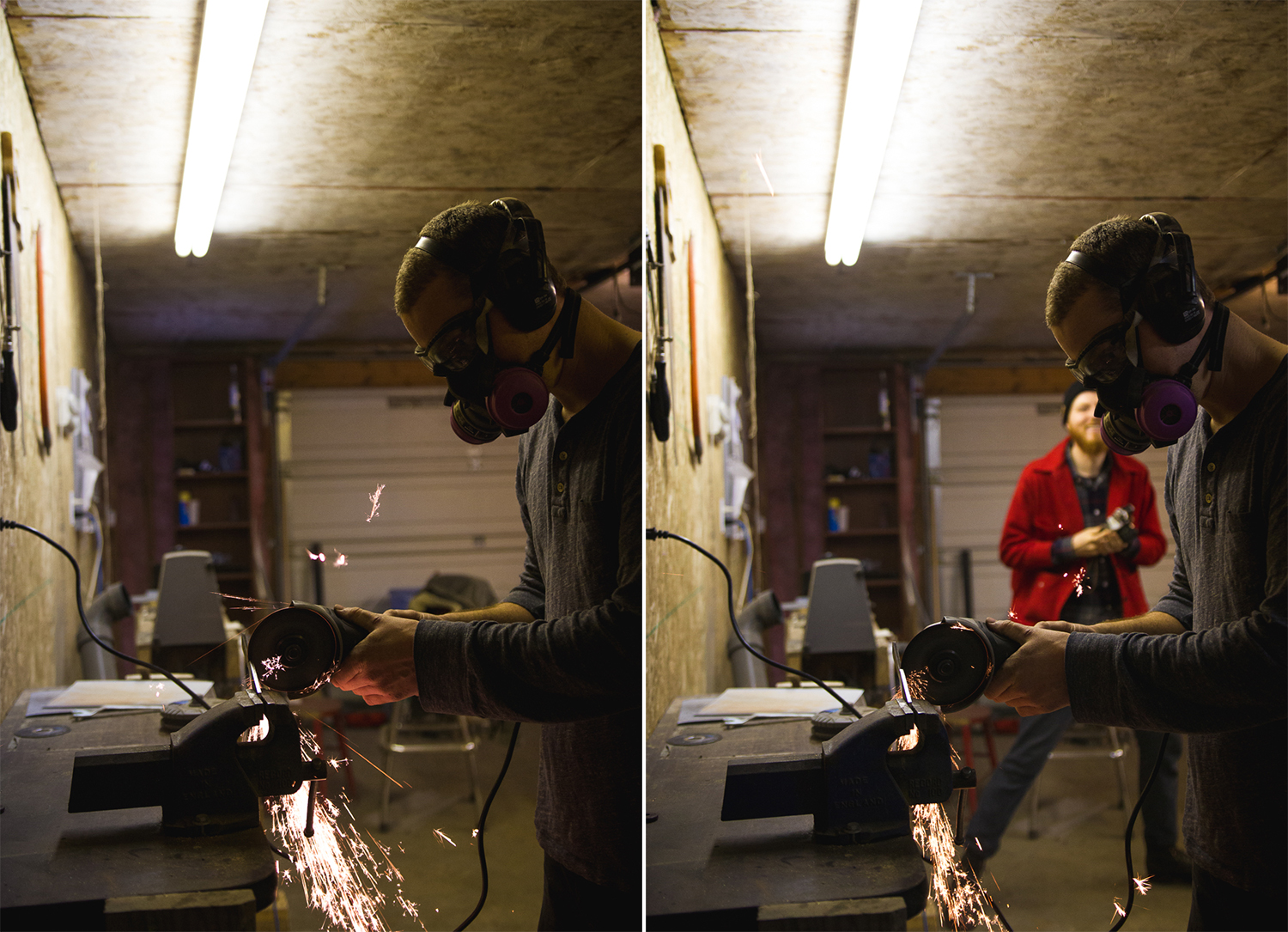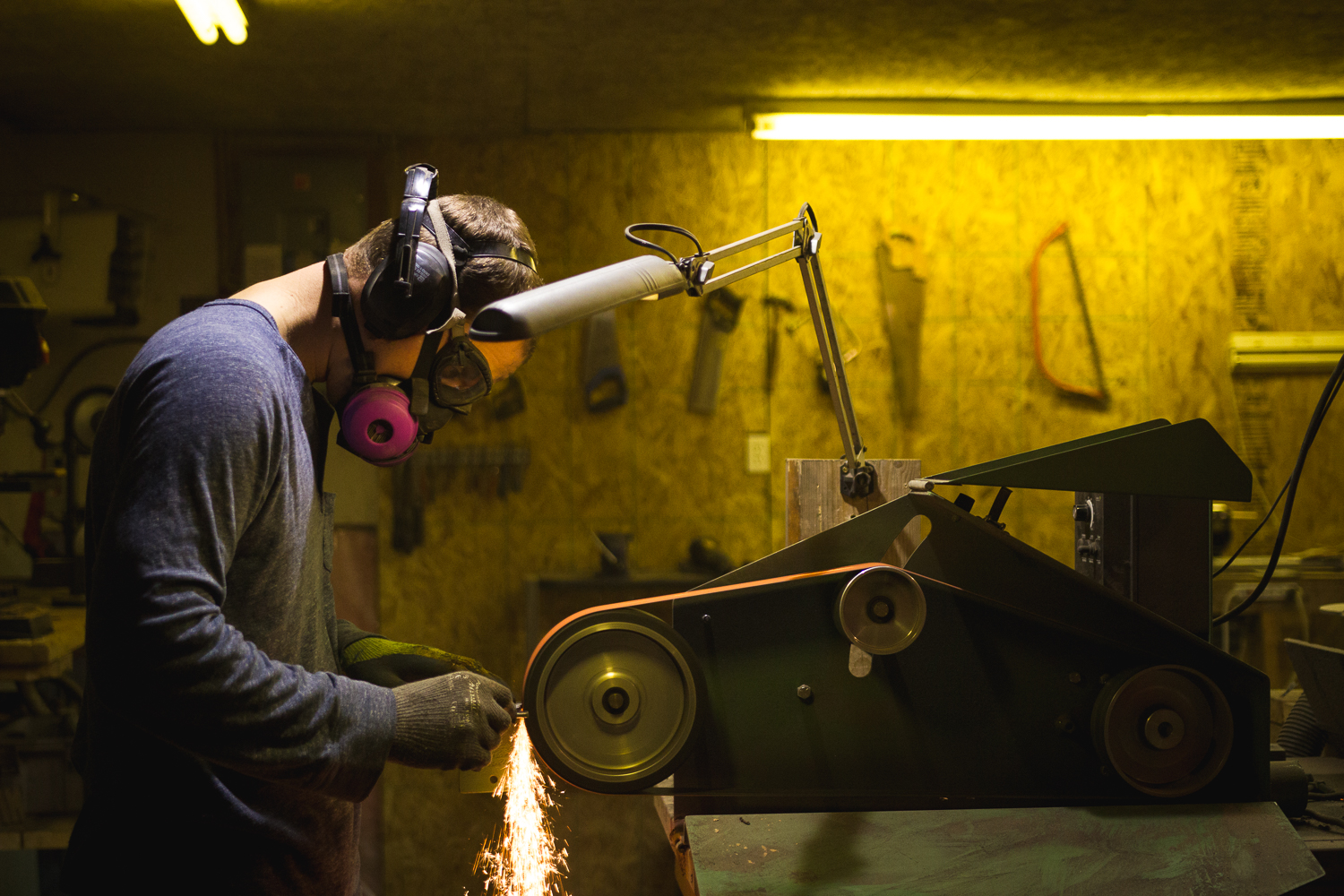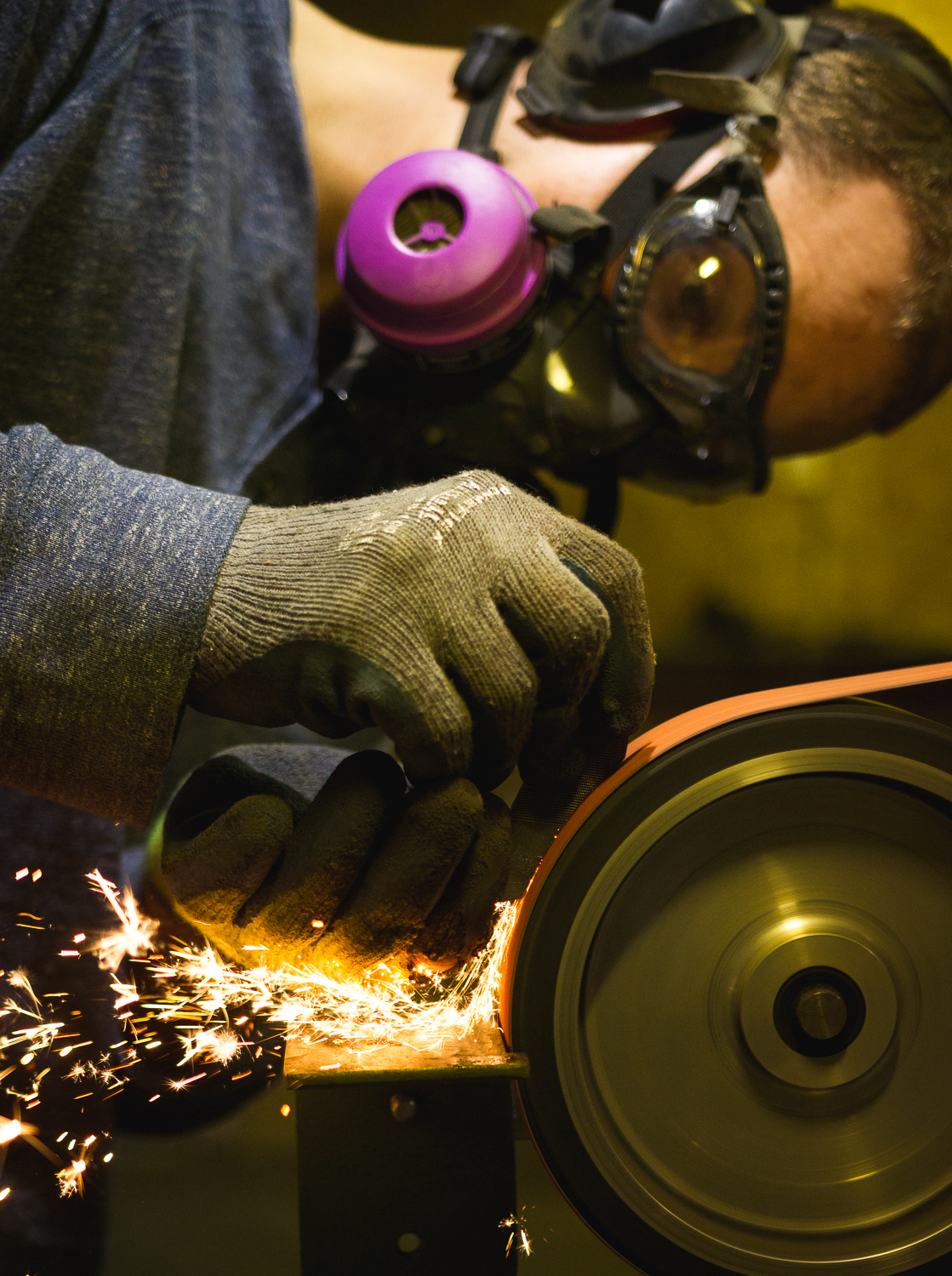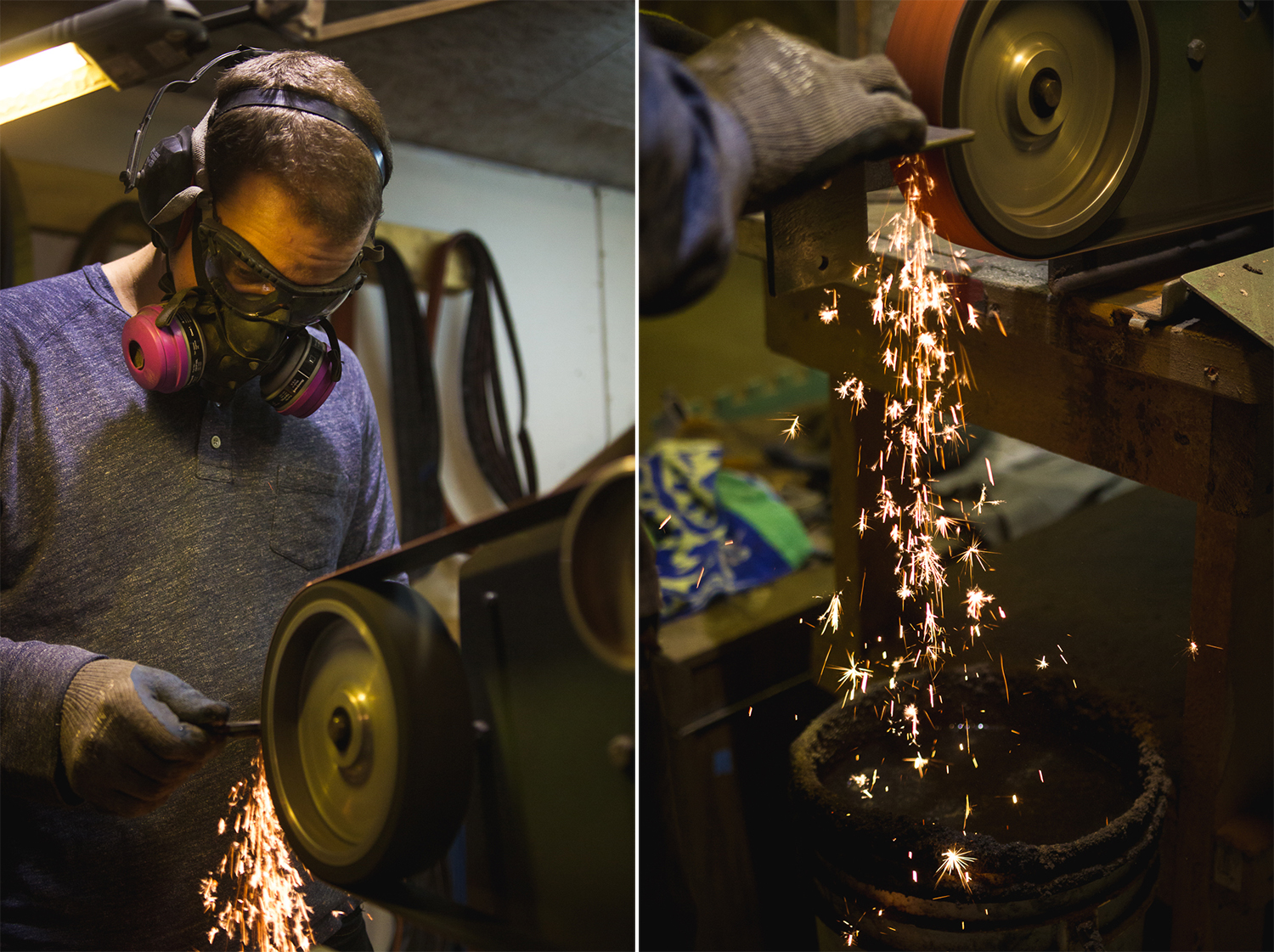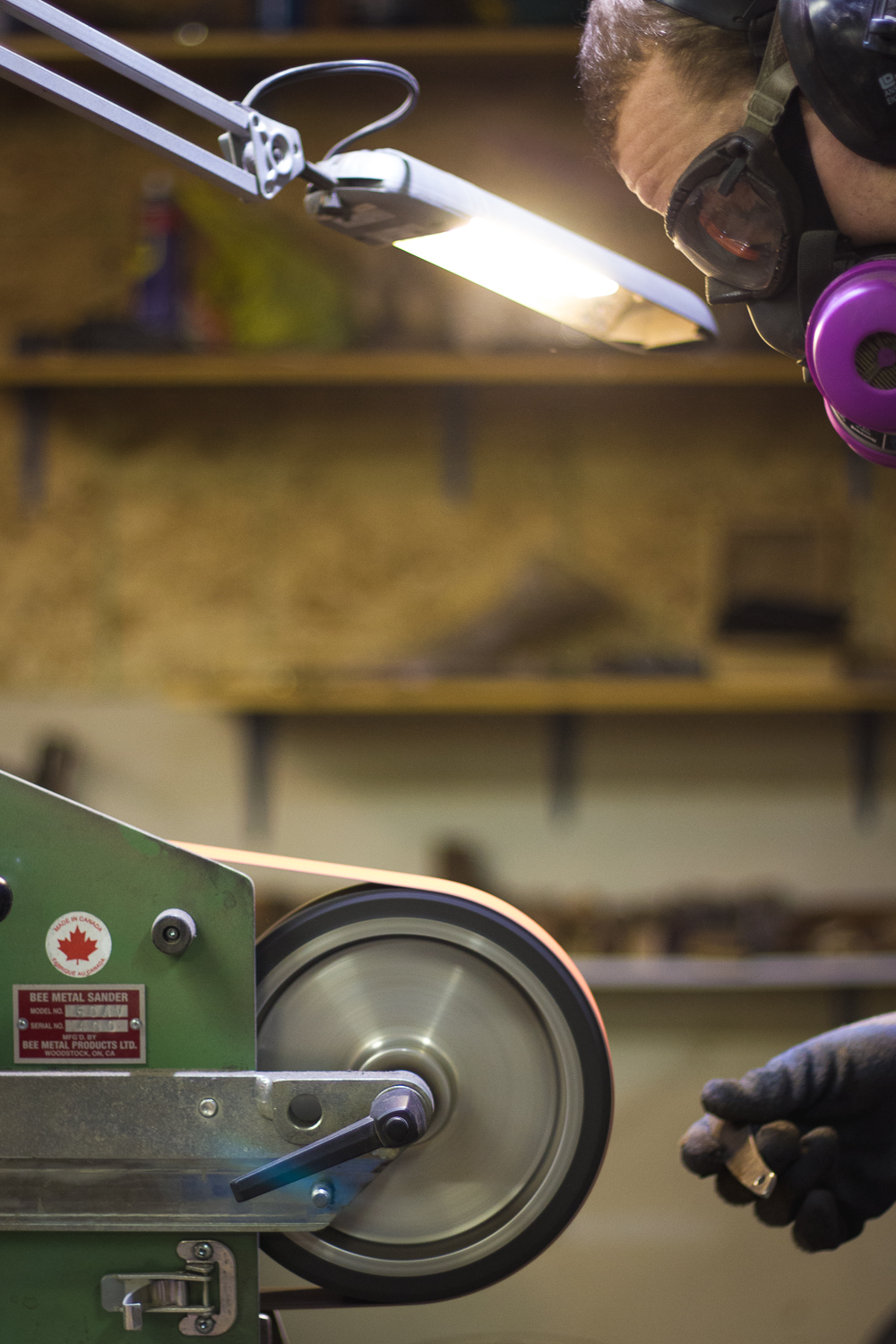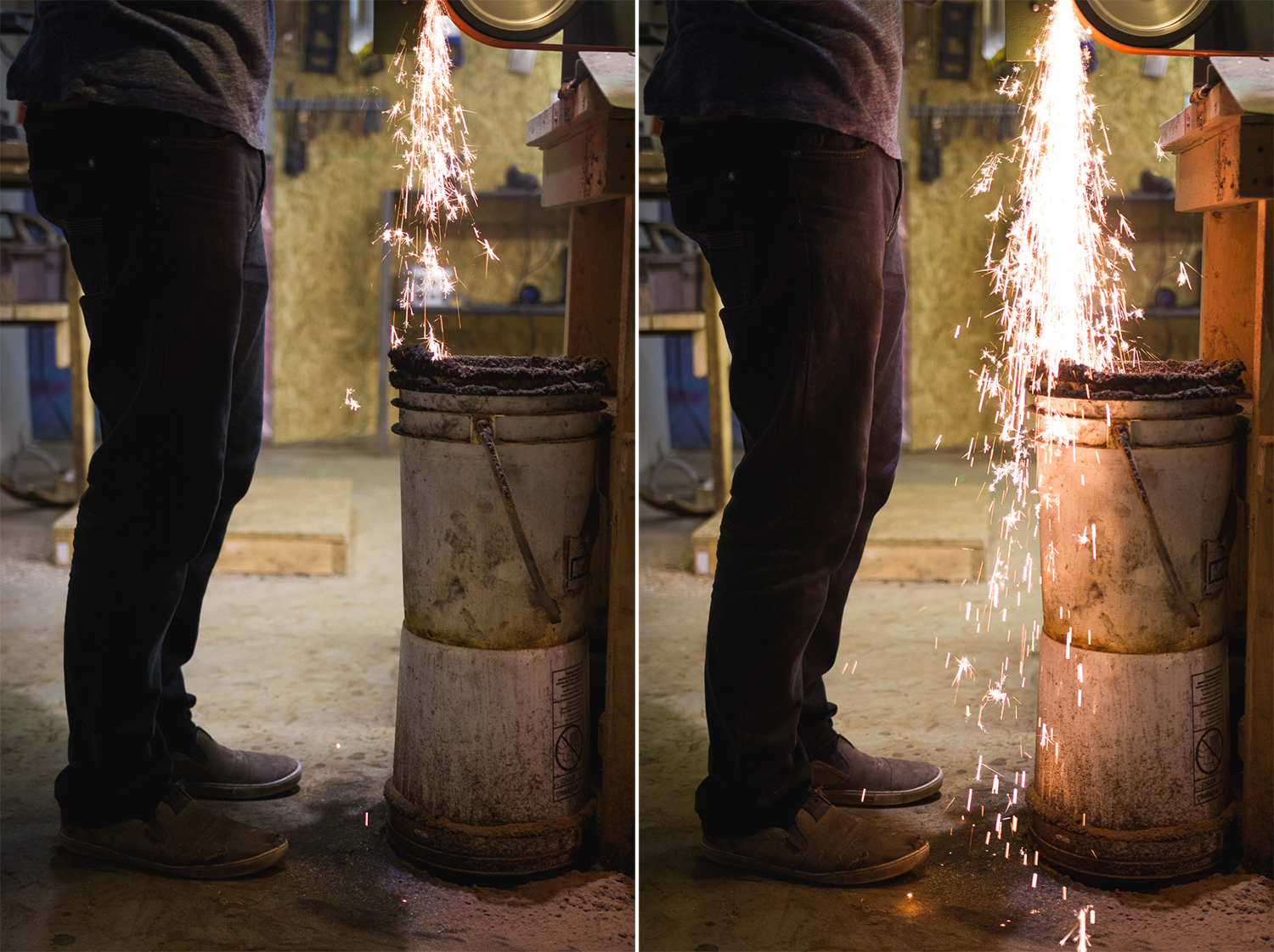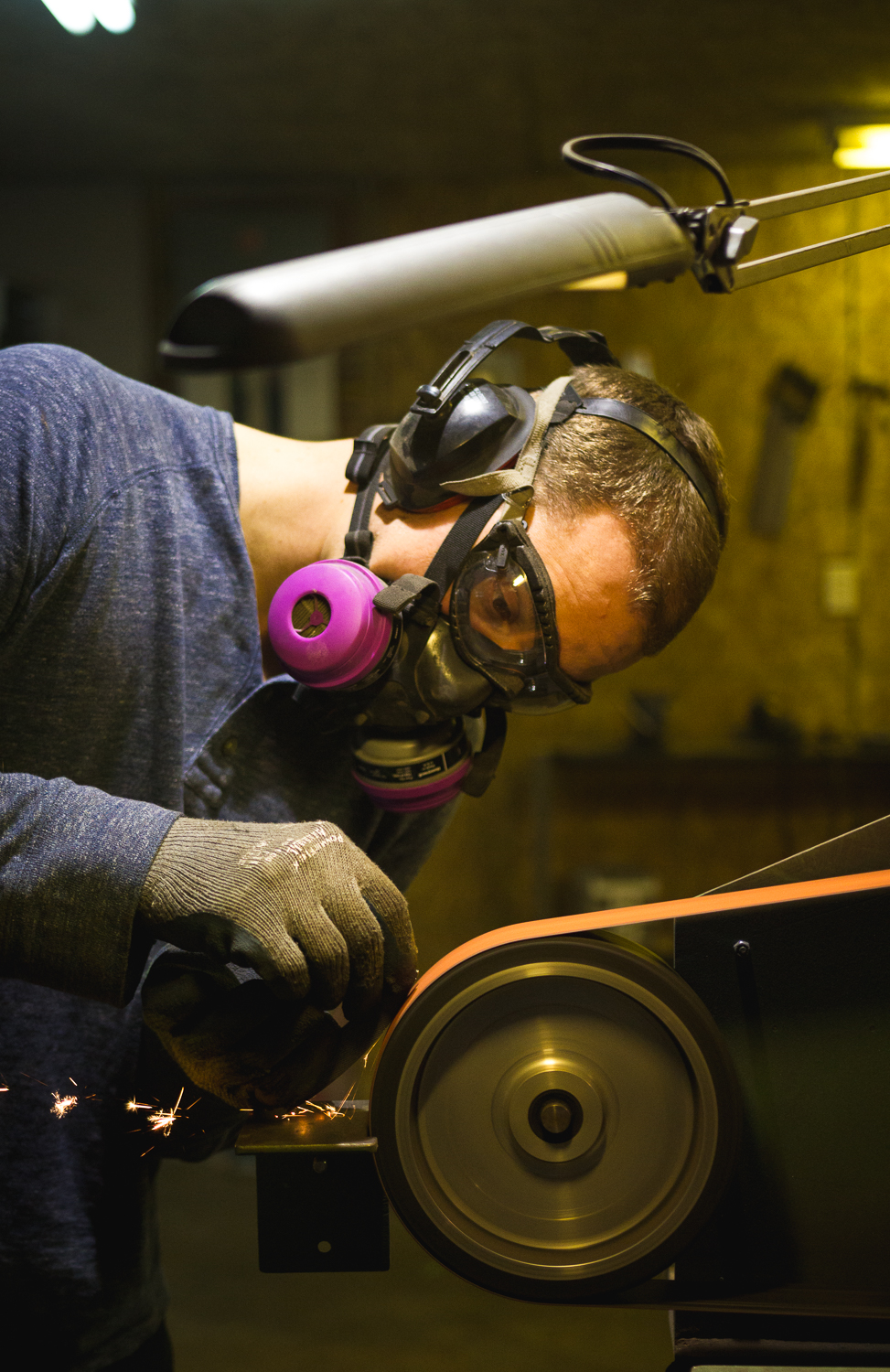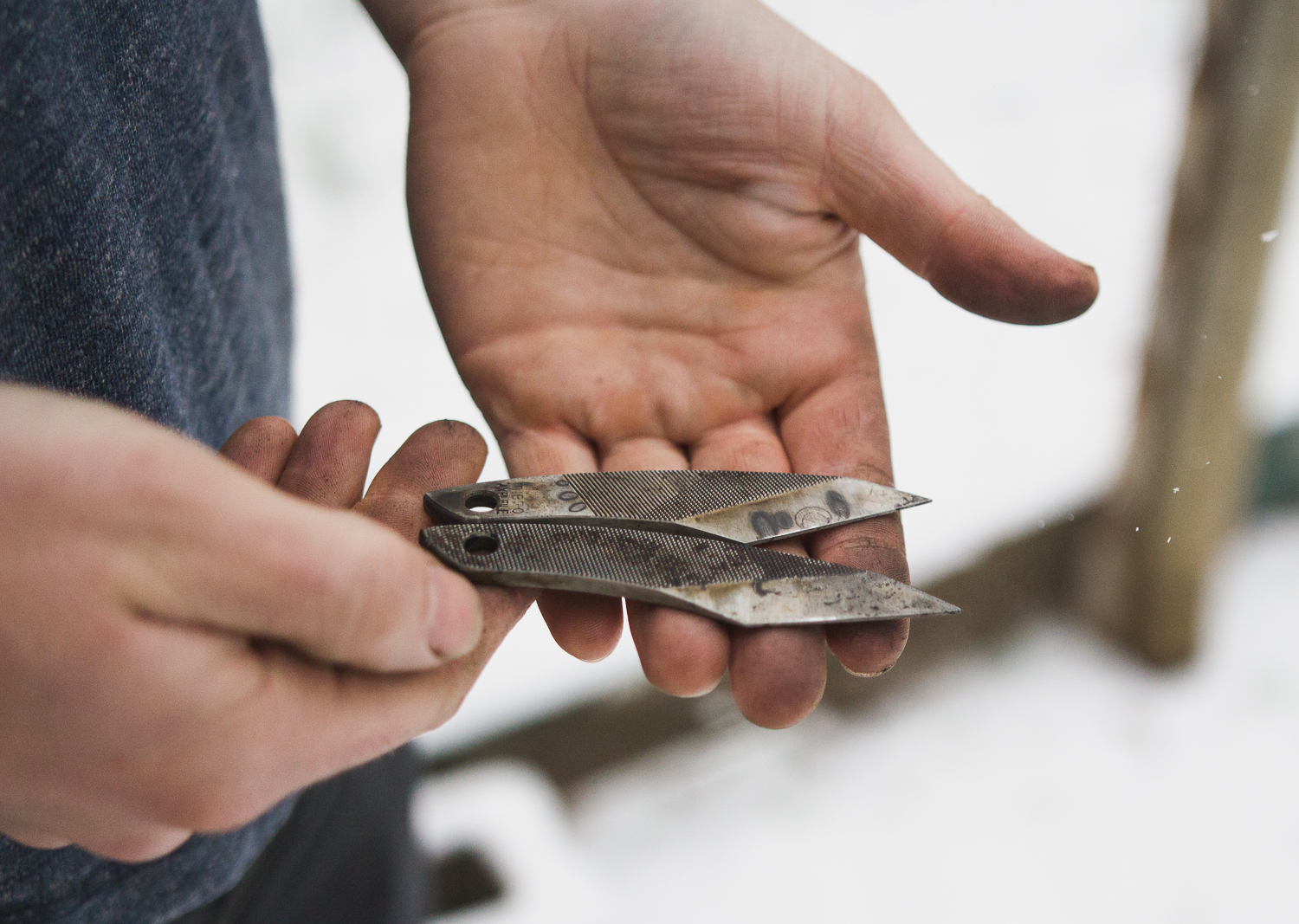Knife Making with Marc Liss: Origin Handcrafted Goods
We've passed Saint Pierre and left behind the turn-off for Grunthal. I'm becoming characteristically anxious that we've missed the turn. Then we see it -- a sign to the right of Highway 59 reading, "Roseau River Bible Camp Next Right." I ease off the highway and onto a gravel road blanketed with fresh snow.
Mackenzie and I drive along, double back, certain we've missed it, press forward again, then stop at what we're fairly sure is the wrong house to ask directions. Two friendly dogs are on us the moment we exit the car. One hand scratches a furry ear while the other knocks on the front door. The home owner doesn't know anyone named Marc Liss, but wait, does he make knives? An affirmative answer brings us speedy directions.
Apparently Mackenzie and I have a knack for getting lost.
When we pull up to Marc and his wife Kayla's home, Marc is quick to greet us at the gate. Their dogs aren't sure if they're shy or interested in us, but Kayla offers us a snack as we sit down to talk about knife-making. Today, Marc will be working on a set of two kiridashi knives crafted from an old file Mackenzie found while doing census work in Nunavut.
FULL: The type of knife you’re making for Mackenzie is called a kiridashi. What does that mean?
Marc Liss: It’s a Japanese style of knife. I believe it literally translates to "small knife." Traditionally, it would have been given to students in school for sharpening pencils and other small jobs. It’s a stripped-down pocket knife: bare bones and useful. They’re quickly becoming my favourite knife to make, because you can cut them directly from files, which makes a really good knife very quickly.
FULL: This question’s going to expose how little I know about tools, but what are files typically used for?
ML: Depending on how the teeth are laid out, they can be used for grinding down softer materials like wood, fitting shoes for horses, wearing down metal. They have many uses.
FULL: Is there a long tradition of people making knives from files?
ML: There must be. But I’d also say that in the last two or three years, there’s been an explosion in knife making as a hobby.
I buy some of my files at a flea market on Pembina. There’s an old man with a booth there selling vintage tools. He’s been selling these tools for twenty years and told me that for seventeen of those years, he had heaps of files and no one cared; he couldn’t sell them. Now he’s been selling about three hundred files a month for the last three years.
Through Instagram, I met a guy who makes knives in his apartment. He’s using a file to scrape steel away from another file, making knives at his desk. There are only a handful of people doing it on the scale of production around Manitoba.
FULL: What do you use your own kiridashi for?
ML: I have mine on me all the time, and it’s one of those things you don’t realize how much you use until you have it: opening boxes, cutting stray threads off clothing, cleaning nails, whatever.
FULL: Can you explain more about why you’re drawn to making kiridashis specifically?
ML: I like retaining the lines of a file. Other kinds of knives are made out of things like saw blades, which require hammer work. They’re beautiful too, but with hammering, you lose hints of what the knife once was. Files are made of high-carbon steel. It’s what was used in Japanese and medieval swords as they got better and stronger. Because files are used to wear down metal, they have to be extremely hard. This is some of the best steel you can get. It’s just sitting around in stores and anywhere you happen to find it.
FULL: So Mackenzie, that brings us to how you found the file. Because I know there’s a story connected to it for you.
Mackenzie Smith: I went up to Nunavut for a month with the census. While I was working in Naujaat up there, I heard about these whale bones a five kilometre walk from the community. I took this walk by myself a couple times. There, you have these large rock formations with glacier showing, planes flying above. I was slipping around in -40 weather with cameras tucked in my jacket so they'd stay warm.
I hung around these bones for a while. They were about twelve feet long, daunting, massive, and surrounded by small rock formations the Inuit had built. The bones were arranged in a very interesting way.
The first time out there, I was alone. I was gone for three hours, and came across a little shack, an arctic fox just hopping around me. It was really neat. While checking out some busted old boats and oars, I found this file laying on the beach. I brought it back with no intention of doing much with it.
I’ll probably wind up using it to sharpen pencils now that it will be a knife.
FULL: I spent six weeks in Kugluktuk, Nunavut, and would spend hours just trying to walk to a point on the horizon. A daily reminder of those times would be a nice thing. How did you get from the file to the realization that this could be a knife?
ML: Mackenzie saw some kiridashis on my Instagram, and messaged me asking if the file he’d found would make a good knife.
The file’s now been in the kiln for two hours at 1200 degrees. That softens it enough to work it.
FULL: What happens next?
ML: There are many options. If the file’s was too thick, I could hammer it out. This one doesn't require that, but once forging’s done, I take a file to the grinder, which is basically a giant belt sander. I grind in to clean up the profile. The trickiest and most time-consuming part is getting an even bevel on it. After grinding it down to the desired shape, I have to harden the file up again. Every steel has a very specific hardening temperature; these ones will harden at 1475 degrees. Once they hit that temperature in the kiln, I’ll quickly dunk them in water, which is an extremely stressful process for the steel. That makes the file like glass: rock hard, but useless as a knife. If I dropped it, it would shatter. Then I bake the knives in our oven here at 400 degrees for two two-hour cycles. That softens them again, but not to the degree they were softened before. It relieves the intense stress of the dunking process, and brings the edge somewhere between glass-hard and iron-soft. Different knives are heated in the oven at different temperatures, according to their purpose.
The last step is to take those knives back to the grinder and bring that edge right down. I also make a leather sheath for each one.
FULL: Can you explain more about how these knives are different from most modern commercial knives?
ML: They’re high-carbon steel as opposed to stainless. They can’t be soaked in water, because they’ll rust, but with proper care, they look great and develop a beautiful patina.
MS: One of the things I wanted to know when I first messaged Marc was whether the file would be any good. It had been on this beach for who knows how many winters. It was rusted and grass matted, yet it will still make a decent knife.
ML: What I like about using files is they often have big gauges or paint smeared on them. They have this history of use that you can see and retain. I especially like being able to keep the stamps at their base, because that’s the actual maker of the file. Those stamps mean that no kiridashi I’ve made has been the same.
I like imagining that someone used this file for years for a very particular task, then it sat on a beach for God knows how long, and then you picked it up. Now it’s going to be made into a set of knives and go on through its life like that.

